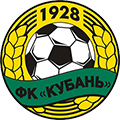Финал Кубка России по футболу 2015. Финал кубка россии по футболу 2015
Финал Кубка России по футболу 2015 — Википедия (с комментариями)
Материал из Википедии — свободной энциклопедии
Финал Кубка России по футболу 2015 состоялся 21 мая 2015 года на стадионе «Центральный» в Астрахани. В нём встретились «Локомотив» и «Кубань».
Арбитр матча
13 мая 2015 года главным судьёй матча был назначен Владислав Безбородов[1] (Санкт-Петербург).
Путь к финалу
Отчёт о матче
Напишите отзыв о статье "Финал Кубка России по футболу 2015"
Ссылки
- ↑ [rfs.ru/main/news/rfs_news/81598.html Безбородов назначен на финал Кубка России]
Отрывок, характеризующий Финал Кубка России по футболу 2015
Петя при выезде из Москвы, оставив своих родных, присоединился к своему полку и скоро после этого был взят ординарцем к генералу, командовавшему большим отрядом. Со времени своего производства в офицеры, и в особенности с поступления в действующую армию, где он участвовал в Вяземском сражении, Петя находился в постоянно счастливо возбужденном состоянии радости на то, что он большой, и в постоянно восторженной поспешности не пропустить какого нибудь случая настоящего геройства. Он был очень счастлив тем, что он видел и испытал в армии, но вместе с тем ему все казалось, что там, где его нет, там то теперь и совершается самое настоящее, геройское. И он торопился поспеть туда, где его не было. Когда 21 го октября его генерал выразил желание послать кого нибудь в отряд Денисова, Петя так жалостно просил, чтобы послать его, что генерал не мог отказать. Но, отправляя его, генерал, поминая безумный поступок Пети в Вяземском сражении, где Петя, вместо того чтобы ехать дорогой туда, куда он был послан, поскакал в цепь под огонь французов и выстрелил там два раза из своего пистолета, – отправляя его, генерал именно запретил Пете участвовать в каких бы то ни было действиях Денисова. От этого то Петя покраснел и смешался, когда Денисов спросил, можно ли ему остаться. До выезда на опушку леса Петя считал, что ему надобно, строго исполняя свой долг, сейчас же вернуться. Но когда он увидал французов, увидал Тихона, узнал, что в ночь непременно атакуют, он, с быстротою переходов молодых людей от одного взгляда к другому, решил сам с собою, что генерал его, которого он до сих пор очень уважал, – дрянь, немец, что Денисов герой, и эсаул герой, и что Тихон герой, и что ему было бы стыдно уехать от них в трудную минуту. Уже смеркалось, когда Денисов с Петей и эсаулом подъехали к караулке. В полутьме виднелись лошади в седлах, казаки, гусары, прилаживавшие шалашики на поляне и (чтобы не видели дыма французы) разводившие красневший огонь в лесном овраге. В сенях маленькой избушки казак, засучив рукава, рубил баранину. В самой избе были три офицера из партии Денисова, устроивавшие стол из двери. Петя снял, отдав сушить, свое мокрое платье и тотчас принялся содействовать офицерам в устройстве обеденного стола. Через десять минут был готов стол, покрытый салфеткой. На столе была водка, ром в фляжке, белый хлеб и жареная баранина с солью. Сидя вместе с офицерами за столом и разрывая руками, по которым текло сало, жирную душистую баранину, Петя находился в восторженном детском состоянии нежной любви ко всем людям и вследствие того уверенности в такой же любви к себе других людей. – Так что же вы думаете, Василий Федорович, – обратился он к Денисову, – ничего, что я с вами останусь на денек? – И, не дожидаясь ответа, он сам отвечал себе: – Ведь мне велено узнать, ну вот я и узнаю… Только вы меня пустите в самую… в главную. Мне не нужно наград… А мне хочется… – Петя стиснул зубы и оглянулся, подергивая кверху поднятой головой и размахивая рукой. – В самую главную… – повторил Денисов, улыбаясь. – Только уж, пожалуйста, мне дайте команду совсем, чтобы я командовал, – продолжал Петя, – ну что вам стоит? Ах, вам ножик? – обратился он к офицеру, хотевшему отрезать баранины. И он подал свой складной ножик. Офицер похвалил ножик. – Возьмите, пожалуйста, себе. У меня много таких… – покраснев, сказал Петя. – Батюшки! Я и забыл совсем, – вдруг вскрикнул он. – У меня изюм чудесный, знаете, такой, без косточек. У нас маркитант новый – и такие прекрасные вещи. Я купил десять фунтов. Я привык что нибудь сладкое. Хотите?.. – И Петя побежал в сени к своему казаку, принес торбы, в которых было фунтов пять изюму. – Кушайте, господа, кушайте. – А то не нужно ли вам кофейник? – обратился он к эсаулу. – Я у нашего маркитанта купил, чудесный! У него прекрасные вещи. И он честный очень. Это главное. Я вам пришлю непременно. А может быть еще, у вас вышли, обились кремни, – ведь это бывает. Я взял с собою, у меня вот тут… – он показал на торбы, – сто кремней. Я очень дешево купил. Возьмите, пожалуйста, сколько нужно, а то и все… – И вдруг, испугавшись, не заврался ли он, Петя остановился и покраснел. Он стал вспоминать, не сделал ли он еще каких нибудь глупостей. И, перебирая воспоминания нынешнего дня, воспоминание о французе барабанщике представилось ему. «Нам то отлично, а ему каково? Куда его дели? Покормили ли его? Не обидели ли?» – подумал он. Но заметив, что он заврался о кремнях, он теперь боялся. «Спросить бы можно, – думал он, – да скажут: сам мальчик и мальчика пожалел. Я им покажу завтра, какой я мальчик! Стыдно будет, если я спрошу? – думал Петя. – Ну, да все равно!» – и тотчас же, покраснев и испуганно глядя на офицеров, не будет ли в их лицах насмешки, он сказал: – А можно позвать этого мальчика, что взяли в плен? дать ему чего нибудь поесть… может… – Да, жалкий мальчишка, – сказал Денисов, видимо, не найдя ничего стыдного в этом напоминании. – Позвать его сюда. Vincent Bosse его зовут. Позвать. – Я позову, – сказал Петя. – Позови, позови. Жалкий мальчишка, – повторил Денисов. Петя стоял у двери, когда Денисов сказал это. Петя пролез между офицерами и близко подошел к Денисову. – Позвольте вас поцеловать, голубчик, – сказал он. – Ах, как отлично! как хорошо! – И, поцеловав Денисова, он побежал на двор. – Bosse! Vincent! – прокричал Петя, остановясь у двери. – Вам кого, сударь, надо? – сказал голос из темноты. Петя отвечал, что того мальчика француза, которого взяли нынче. – А! Весеннего? – сказал казак. Имя его Vincent уже переделали: казаки – в Весеннего, а мужики и солдаты – в Висеню. В обеих переделках это напоминание о весне сходилось с представлением о молоденьком мальчике. – Он там у костра грелся. Эй, Висеня! Висеня! Весенний! – послышались в темноте передающиеся голоса и смех. – А мальчонок шустрый, – сказал гусар, стоявший подле Пети. – Мы его покормили давеча. Страсть голодный был! В темноте послышались шаги и, шлепая босыми ногами по грязи, барабанщик подошел к двери. – Ah, c'est vous! – сказал Петя. – Voulez vous manger? N'ayez pas peur, on ne vous fera pas de mal, – прибавил он, робко и ласково дотрогиваясь до его руки. – Entrez, entrez. [Ах, это вы! Хотите есть? Не бойтесь, вам ничего не сделают. Войдите, войдите.] – Merci, monsieur, [Благодарю, господин.] – отвечал барабанщик дрожащим, почти детским голосом и стал обтирать о порог свои грязные ноги. Пете многое хотелось сказать барабанщику, но он не смел. Он, переминаясь, стоял подле него в сенях. Потом в темноте взял его за руку и пожал ее.
wiki-org.ru
Финал Кубка России по футболу 2015
1. Локомотив (футбольный клуб, Москва) – FC Lokomotiv Moscow is a Russian football club based in Moscow. Lokomotiv won the Russian Premier League in 2002 and 2004, the USSR Cup in 1936 and 1957, the club was the league runner-up in 1959,1995,1999,2000 and 2001, and finished third in 1994,1998,2005,2006 and 2014. Lokomotiv was the Russian Super Cup holder in 2003 and 2005, Lokomotiv was founded as Kazanka in 1923. In 1924, the club united the strongest football players of several roads of the Moscow railway junction as KOR, in 1931, the club was again renamed to Kazanka and in 1936, it was eventually renamed to as it is known today, Lokomotiv. During the Communist rule, Lokomotiv Moscow club was a part of the Lokomotiv Voluntary Sports Society and was owned by the Soviet Ministry of Transportation through the Russian Railways, Lokomotiv debuted in the first-ever Soviet football club championship with a game against Dynamo Leningrad on 22 May 1936. In the first two championships, Lokomotiv finished fifth and fourth respectively. The first Lokomotiv success arrived shortly as in 1936, the railwaymen rose up to the occasion to beat Dynamo Tbilisi 2–0 in the Soviet Cup Final, the following years were rather successful as Lokomotiv were consistent in the national championships. However, performances after World War II suffered and in a five-year span, in 1951, Lokomotiv came second and eventually won the promotion to the Soviet Top League. This kicked off the second Lokomotivs resurgence and until the beginning of the 1960s, in 1957, Lokomotiv won the cup for the second time, and two years later, Lokomotiv won the silver medals of the Soviet League. Second place was the highest position obtained by Lokomotiv during the Soviet era. Another important trademark for Lokomotiv was the authorization of playing matches against foreign opposition. Typically, up to the late 1950s, international contacts with Soviet teams were extremely rare. In the beginning of the 1990s, Lokomotiv was considered the weakest link amongst the top Moscow clubs and it lacked both results on the pitch and fans support in the stands. However, head coach Yuri Semin and president Valeri Filatov were able to lead the clubs progress, historically, Lokomotiv was not considered to be a big club in the same vein as Spartak, CSKA, Dynamo and Torpedo. With the former Soviet republics and their clubs gone, however, solid performances in domestic league and several memorable campaigns in European Cups made Lokomotiv a superclub by Russian scales and brought back fans and supporters back to the stands. In 2002, a new stadium—Lokomotiv Stadium—resembling a traditional, compact English one was built, the arena, at that time considered to be one of the most comfortable, if not the best, in Eastern Europe gave a huge boost to the clubs fan growth rate. Eventually, by 2009, the attendance at the stadium was the second highest in Moscow. In 2002, a match was needed to decide who will be the champion, as Lokomotiv Moscow
2. Кубань (футбольный клуб) – FC Kuban is a Russian football club based in Krasnodar playing in the Russian Football National League. The team began playing in the Russian Premier League in 2011, FC Kuban is one of the oldest football clubs in Russia. Founded as Dynamo of the Krasnodar NKVD, FC Kuban has changed its affiliations because of changing politics in the USSR, club members and fans are called Kubantsies or yellow-greens. The team is known as the Cossacks by fans. Other nicknames associated with the colours are The Canaries and The Toads. Dynamo Neftyanik Kuban Spartak Kuban Football first appeared in Kuban during the early 20th century, the first matches were intra-club, and football competed with other sports, however, interest gradually grew and friendly matches were played between clubs in different cities. The first intercity football match was played in Ekaterinodar on 6 August 1912 when the Achilles club defeated Novorossiysk Olympia 5–0, since 1913, when the first city championship was played, matches between city teams have become common. According to the club, its history began in 1928 with the organization in Krasnodar of Dynamo NKVD, according to some reports the team was founded a year earlier, but documentary evidence of that club does not exist. The team came into existence in 1928, according to documents in the archives, before there was a national championship, Dynamo played friendly matches with the best teams in Russia, Ukraine and the Caucasus. In addition to matches, tournaments were played in the city. In 1931 Dynamo moved into its own stadium, in the center of Krasnodar and that year, the club received the Sportspeople of the Northern Caucasus award. In 1935, Dynamo played in the intercity USSR Championship, in the group stage in Pyatigorsk, the team played three games in five days. On 26 June, they played to a 2–2 draw with Yerevan, on 30 June the club lost to Pyatigorsk 1–2, finishing third in the group. Dynamo was undefeated in the zone tournament, the playoffs began on 3 October at the Dynamo stadium, where the hosts reached the finals undefeated. On 17 October 1948 Dynamo beat Molotov 4–0 in the final and became, for the first time in their history, in 1953 Dynamo changed its name to Neftyanik, representing Krasnodar in the Class B Soviet League the following year. The team played well in the first round of the 1953 championship but faltered in the second, in the 1955 season, Neftyanik finished in fifth place and was promoted to Class A of the Soviet Top League. The following year, the finished fourth. In the 1957 season Neftyanik again finished fourth, in 1958 the team again changed its name, this time to Kuban
3. Центральный (стадион, Астрахань) – Central Stadium is a multi-purpose stadium in Astrakhan, Russia. It is used mostly for football matches and is the stadium of Volgar Astrakhan. The stadium holds 17,712 people, all seated, the venue hosted 2015 Russian Cup Final between Lokomotiv Moscow and Kuban Krasnodar. This was the first time Central Stadium had been chosen to host Russian Cup final
4. Астрахань – Astrakhan is a city in southern Russia and the administrative center of Astrakhan Oblast. The city lies on two banks of the Volga River, close to where it discharges into the Caspian Sea at an altitude of 28 meters below sea level. As of the 2010 Census, its population was 520,339, the oldest economic and cultural center of the Lower Volga, it is often called the southernmost outpost of Russia and the Caspian capital. The city is located in the part of the Volga delta. The distance to Moscow by road is 1,411 kilometers, Astrakhan is in the Volga Delta, which is rich in sturgeon and exotic plants. The fertile area formerly contained the capitals of Khazaria and the Golden Horde, Astrakhan was first mentioned by travelers in the early 13th century as Xacitarxan. Tamerlane burnt it to the ground in 1395, from 1459 to 1556, Xacitarxan was the capital of Astrakhan Khanate. The ruins of medieval settlement were found by archaeologists 12 km upstream from the modern-day city. In 1556, the khanate was conquered by Ivan the Terrible and this year is traditionally considered to be the foundation of the modern city. In 1569, during the Russo-Turkish War, Astrakhan was besieged by the Ottoman army, a year later, the Ottoman sultan renounced his claims to Astrakhan, thus opening the entire Volga River to Russian traffic. The Ottoman Empire, though defeated, insisted on safe passage for Muslim pilgrims. In the 17th century, the city was developed as a Russian gate to the Orient, many merchants from Armenia, Safavid Persia, Mughal India and Khiva khanate settled in the town, giving it a cosmopolitan character. For seventeen months in 1670–1671, Astrakhan was held by Stenka Razin, the city rebelled against the Tsar once again in 1705, when it was held by the Cossacks under Kondraty Bulavin. A Kalmuck khan laid a siege to the kremlin several years before that. In 1711, it became the seat of a governorate, whose first governors included Artemy Petrovich Volynsky, six years later, Astrakhan served as a base for the first Russian venture into Central Asia. It was granted town status in 1717, in 1702,1718 and 1767, it suffered severely from fires, in 1719 it was plundered by the Safavid Persians, and in 1830, cholera killed much of the populace. Astrakhans kremlin was built from the 1580s to the 1620s from bricks taken from the site of Sarai Berke and its two impressive cathedrals were consecrated in 1700 and 1710, respectively. Built by masters from Yaroslavl, they retain many features of Russian church architecture
5. Судья (футбол) – In association football, the referee is the person responsible for enforcing the Laws of the Game during the course of a match. At higher levels of play the referee may also be assisted by an official who supervises the teams technical areas. Referees remuneration for their services varies between leagues, Referees are licensed and trained by the same national organisations that are members of FIFA. Each national organisation recommends its top officials to FIFA to have the honour of being included on the FIFA International Referees List. International games between national teams require FIFA officials, otherwise, the local national organisation determines the manner of training, ranking and advancement of officials from the youngest youth games through professional matches. The referees powers and duties are described by Law 5 of the Laws of the Game, as per Law 9 of the game, if during the game the ball hits the referee there is no stoppage in play. However the officials would be expected to position themselves such that this would be unlikely to occur. Modern day referees and their assistants wear a uniform consisting of a jersey, badge, shorts and socks, since then, most referees have worn either yellow or black, but the colours and styles adopted by individual associations vary greatly. For international contests under the supervision of FIFA, Adidas uniforms are worn because Adidas is the current sponsor, FIFA allows referees to wear five colours, black, red, yellow, green and blue. Along with the jersey, referees are required to wear shorts, black socks. The badge, which displays the referees license level and year of validity, is affixed to the left chest pocket. All referees carry a whistle, a watch, penalty cards, a wallet with pen and paper. Most are encouraged to have more than one of each on them in case they drop a whistle or a pen runs out, often, referees utilize two watches so that they can use one to calculate time lost for stoppages for the purposes of added time. In matches with goal-line technology, the referee will have on their person a device to receive the systems alerts, Referees use a whistle to help in match control. The whistle is sometimes needed to stop, start or restart play but should not be used for all stoppages, fIFAs Laws of the Game document gives guidance as to when the whistle should and should not be used. Overuse of the whistle is discouraged since, as stated in the Laws, the whistle is an important tool for the referee along with verbal, body and eye communication. Before the introduction of the whistle, referees indicated their decisions by waving a white handkerchief, the whistles that were first adopted by referees were made by Joseph Hudson at Mills Munitions in Birmingham, England. The Acme Whistle Company first began to mass-produce pea whistles in the 1870s for the Metropolitan Police Force, Referees in football are first described by Richard Mulcaster in 1581
6. Безбородов, Владислав Юрьевич – Vladislav Yuryevich Bezborodov is a Russian professional football referee and a former footballer. As a player, he played for Zenit St. Petersburg, Dynamo St. Petersburg, Dinamo Minsk, and Ventspils. He took a break from football after 5 matches for Zenit in 1991 to study in the United States. He made his return to Russia in 1998 with Dynamo St. Petersburg in the Russian Second Division and his father Yuri Bezborodov played professionally in 1960s and 1970s for FC Irtysh Omsk and FC Dynamo Leningrad. Bezborodov became a FIFA referee in 2009, starting in 2012, he officiated in 2014 World Cup qualifying, taking charge of the match between the Czech Republic and Bulgaria
7. Санкт-Петербург – Saint Petersburg is Russias second-largest city after Moscow, with five million inhabitants in 2012, and an important Russian port on the Baltic Sea. It is politically incorporated as a federal subject, situated on the Neva River, at the head of the Gulf of Finland on the Baltic Sea, it was founded by Tsar Peter the Great on May 271703. In 1914, the name was changed from Saint Petersburg to Petrograd, in 1924 to Leningrad, between 1713 and 1728 and 1732–1918, Saint Petersburg was the capital of imperial Russia. In 1918, the government bodies moved to Moscow. Saint Petersburg is one of the cities of Russia, as well as its cultural capital. The Historic Centre of Saint Petersburg and Related Groups of Monuments constitute a UNESCO World Heritage Site, Saint Petersburg is home to The Hermitage, one of the largest art museums in the world. A large number of consulates, international corporations, banks. Swedish colonists built Nyenskans, a fortress, at the mouth of the Neva River in 1611, in a then called Ingermanland. A small town called Nyen grew up around it, Peter the Great was interested in seafaring and maritime affairs, and he intended to have Russia gain a seaport in order to be able to trade with other maritime nations. He needed a better seaport than Arkhangelsk, which was on the White Sea to the north, on May 1703121703, during the Great Northern War, Peter the Great captured Nyenskans, and soon replaced the fortress. On May 271703, closer to the estuary 5 km inland from the gulf), on Zayachy Island, he laid down the Peter and Paul Fortress, which became the first brick and stone building of the new city. The city was built by conscripted peasants from all over Russia, tens of thousands of serfs died building the city. Later, the city became the centre of the Saint Petersburg Governorate, Peter moved the capital from Moscow to Saint Petersburg in 1712,9 years before the Treaty of Nystad of 1721 ended the war, he referred to Saint Petersburg as the capital as early as 1704. During its first few years, the city developed around Trinity Square on the bank of the Neva, near the Peter. However, Saint Petersburg soon started to be built out according to a plan, by 1716 the Swiss Italian Domenico Trezzini had elaborated a project whereby the city centre would be located on Vasilyevsky Island and shaped by a rectangular grid of canals. The project was not completed, but is evident in the layout of the streets, in 1716, Peter the Great appointed French Jean-Baptiste Alexandre Le Blond as the chief architect of Saint Petersburg. In 1724 the Academy of Sciences, University and Academic Gymnasium were established in Saint Petersburg by Peter the Great, in 1725, Peter died at the age of fifty-two. His endeavours to modernize Russia had met opposition from the Russian nobility—resulting in several attempts on his life
8. Сибирь (футбольный клуб, Новосибирск) – FC Sibir Novosibirsk is a Russian association football club based in Novosibirsk, playing at the Spartak Stadium. They played their season in the Russian Premier League in 2010. In 1992 Chkalovets entered the newly formed Russian First League and in 1994 was moved to the Russian Second League after the reduction of the First League, in 1994 Chkalovets were promoted to the First League, where they played in 1995 and 1996. In 1996 Chkalovets finished last among 22 teams and were relegated to the Second League, in 2000 Chkalovets merged with Olimpik Novosibirsk, keeping their place in the Second League, and the team named Chkalovets-1936 entered the amateur league. According to Sibir and independent sources, it is Chkalovets-1936 that inherits the history of the Soviet club, Chkalovets-1936 were promoted to the Second League after the 2000 season, and in 2004 they won promotion to the First Division. They changed their name as Sibir in 2006 and promoted to Russian Premier League once after finishing First League as 2nd in 2009, continuing to make history, on 19 August 2010 Sibir sensationally beat PSV in a Europa League match, 1–0, with a goal in stoppage time. Russian Cup, Runner-up 2009/2010 2010–11 UEFA Europa League play-off round As of 14 February 2017, note, Flags indicate national team as defined under FIFA eligibility rules. Players may hold more than one non-FIFA nationality, FC Sibir reserve team, FC Sibir-2 Novosibirsk, played in Russian Second Division in 2008, and then once again from 2011 until 2015–16, it was dissolved after that season. Had international caps for their respective countries, players whose name is listed in bold represented their countries while playing for Sibir
9. Балтика (футбольный клуб) – Baltika is an association football club based in Kaliningrad, Russia. Currently the club plays in the Russian Football National League, the club was founded on 22 December 1954 as Pishchevik Kaliningrad. In 1958 the club was renamed Baltika, the team entered the Soviet League in 1957 and played in Class B, Class A, Group 2, and Second League. The best result was achieved in 1984, when Baltika won the group tournament. In 1992 Baltika entered the Russian Second Division and won the regional tournament, after fourth-place finish in 1993 and third position in 1994 Baltika won the division in 1995. In 1996 Baltika achieved the best result in history, finishing 7th in the Top Division. Baltika were relegated in 1998, spending a total of three seasons in the top flight, in 1998 Baltika participated in the Intertoto Cup and reached the third round. Since then, Baltika played in the First Division, except 2002 and 2005 seasons spent in the Second Division, as of 24 February 2017, according to the official FNL website. Note, Flags indicate national team as defined under FIFA eligibility rules, players may hold more than one non-FIFA nationality. Baltikas reserve team played professionally in the Russian Third League in 1994 as FC Baltika-d Kaliningrad, had international caps for their respective countries. Players whose name is listed in bold represented their countries while playing for Baltika
10. Уфа (футбольный клуб) – FC Ufa is a Russian football club based in Ufa that currently plays in the Russian Premier League. The head coaching position of the team was first assigned to two-time English Premier League winner Andrei Kanchelskis, the first official match of the club was against FC Syzran-2003 in the second round of the Russian Cup, which after a stalemate Ufa lost on penalties. Ufa made their debut in the Russian league system on 24 April 2011 with a match against FC Tyumen. Ufa ran out winners, 3–1, with Konstantin Ionov scoring a hat-trick for the hosts. Ufa continued to build on their success to the extent that, coming to the end of the season. Ufas debut in the First Division was a success, as their 48-point haul enabled them to finish the season in the sixth position, just four points off the last promotion playoff spot. The return leg was played four days later in Tomsk, and despite going down early in the match, Ufa managed to hold on to their aggregate lead, Ufa therefore claimed a historic promotion to the top-flight Russian Premier League just three seasons playing in the Russian league system. As of 24 February 2017 Note, Flags indicate national team as defined under FIFA eligibility rules, players may hold more than one non-FIFA nationality. A semi-professional football club called FC Ufa-2 plays in the Russian Amateur Football League, WFC Ufa, a female football club, plays in the Russian First Division, the second tier of the Women Russian football system. Had international caps for their respective countries, players whose name is listed in bold represented their countries while playing for Ufa
wikivisually.com
Кубок России
www.pfl-russia.com

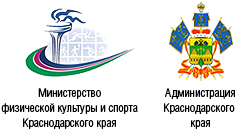




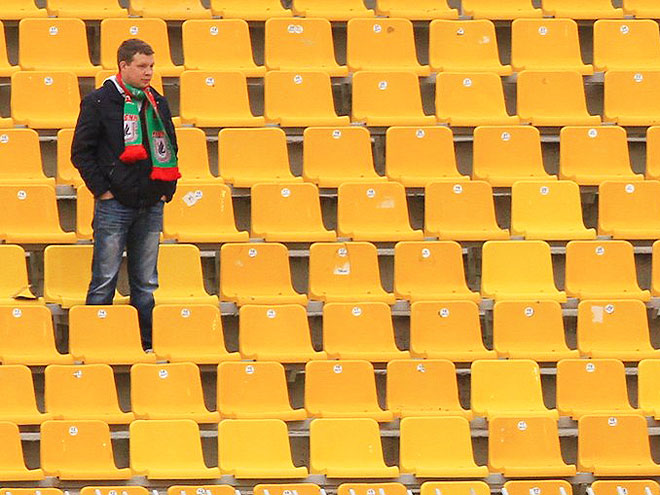

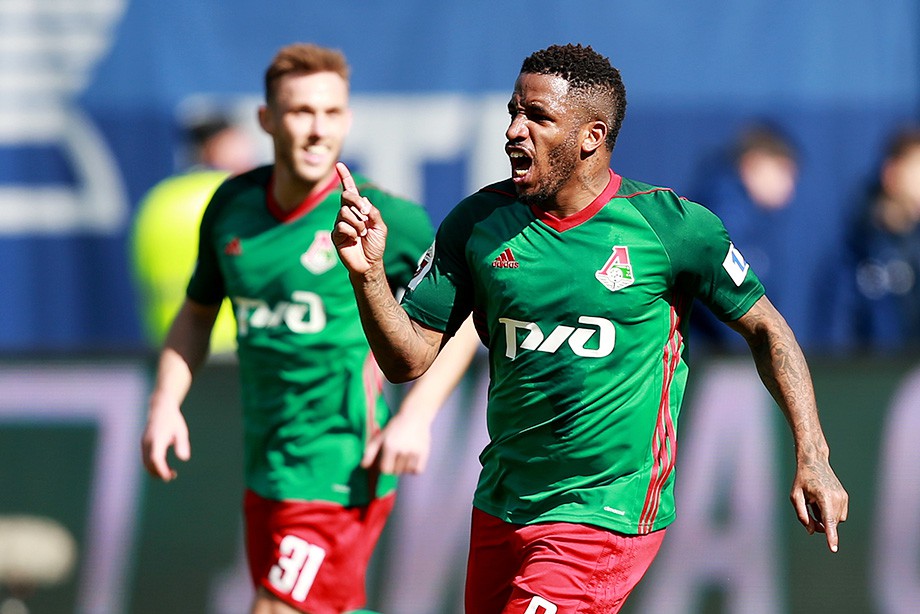

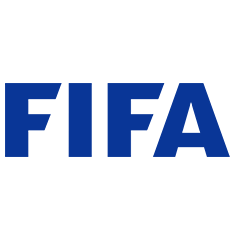
.gif)
